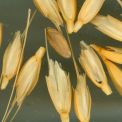 A magic circle is a sacred space marked out by some practitioners of ritual magic.
A magic circle is a sacred space marked out by some practitioners of ritual magic.
These circles are believed to contain energy that forms a sacred space to provide protection for the practice of magic spells and invocation of gods and spirits.
This ancient practice took place in ancient Babylonian and Neo-Assyrian Period, at least three thousand years ago.
The form of a circle was sprinkled with salt, flour, chalk, water, or just visualized by a magical practitoner. Ancient Sumerians called their ritual circles Zisurrû.
 The Zisurrû, derived from Sumerian, was a defensive measure drawn on the ground around clay figurines. Using flour as part of a Babylonian ritual to thwart evil spirits, this circle was also drawn around a sick person’s bed to protect them against ghosts, demons, or curses.
The Zisurrû, derived from Sumerian, was a defensive measure drawn on the ground around clay figurines. Using flour as part of a Babylonian ritual to thwart evil spirits, this circle was also drawn around a sick person’s bed to protect them against ghosts, demons, or curses.
The choice of flour was crucial to the purpose of the ritual. Some types of wheat flour could repel ghosts. Other types were for rituals invoking personal gods, and barley flour was used to encircle beds of the sick to counter disease-carrying demons.
A ritual tablet of the Maqlû contained a series of incantations that offered instructions on how to do this: “Thereafter, you encircle the bed with flour-paste and recite the incantation “sag ba sag ba” and the incantation “tummu bītu”, meaning “Adjured is the house”.
The incantations are divided into three sequences. During the first of these rites, figurines of the sorcerer were burned, drowned in black liquid, and finally placed face down on the ground and crushed while the first four tablets were recited.
Pure oven, inside whom the fire of the grave is flaring, inside whom the valiant fire-god has taken up residence, flames have reached the sky, burn, set alight, incinerate my witch! May my warlock’s and witch’s life swiftly, quickly come to an end!
— Maqlû, Tablet II, 219–224
It’s exciting to me that we have the actual wording used by the ancient Babylonians for their incantations.
In any case, some of these incantations took the form of destructive rites to thwart the source of evil. Later in the same exercise, these rites were replaced by purification & protection rites for the said victim.
 This involved fumigating the house, massaging the body, and washing out the mouth of the patient. One tablet line to be read out loud while performing those actions states:
This involved fumigating the house, massaging the body, and washing out the mouth of the patient. One tablet line to be read out loud while performing those actions states:
“May their spells be peeled away like garlic!”
In the wee hours of the morning, one of the remaining incantations was recited, while again, washing the patient. This time, the god Nusku was invoked by the patient themselves, who held aloft a bowl of pure water while stating: “You are my reflection – You are mine, & I am yours – May nobody know you, may no evil approach you!”
I’ve noted comparisons in similar, but much later exercises by pre-Christian Europeans. By stating that “nobody knows you”, meant one’s name was not to be said aloud, (or a different name was to be used), because the logic was that a demon can’t find you if they don’t know your real name.) But I digress!
Invoking Nuska, chief vizier to the chief Sumerian god Enlil, also a scribe & a boatman to god Enlil to his wife, goddess Ninlil, became later, in Babylonian & Assyrian mythology, himself a god, one who represented fire & light, hence the early morning incantations of his name, which it was felt by the magical practioner, that that time of day held more power because the night was fading and the sun, like power, was rising in the sky.
In additon to Nuska’s association with fire & light, he played a crucial role in protection from other types of evil. He was invoked as a guardian of the night, and it’s said he protected sleeping people by offering them happy dreams, & preventing any nightmares.

The Witches of Warboyse, A Compleat History of Magick, Sorcery and Witchcraft, Vol. 1, ca 1715. Public Domain
To tie all of this together, humans, (as servants to the gods, according to ancient Sumerians), would have nothing, not even existence, if it weren’t for the gods. So, those same humans demanded to be taken care of by those gods who gave them life. This was done by invoking them with spells & incantations in sacred, protected circles.
Sources:
http://oracc.museum.upenn.edu/amgg/listofdeities/nuska/
https://archive.org/details/reportsofmagicia00thomuoft/page/n5/mode/2up?view=theater
https://en.wikipedia.org/wiki/Zisurr%C3%BB
https://cdli.ucla.edu/search/archival_view.php?ObjectID=P369026







 Sometimes Hecate is represented by the moon’s aspect of a waxing, full, and waning moon.
Sometimes Hecate is represented by the moon’s aspect of a waxing, full, and waning moon.
 There are the three Greek Fates, Clotho, Lachesis & Atropos, who spin, draw out, & cut the thread of life. 🪡 🧵✂️
There are the three Greek Fates, Clotho, Lachesis & Atropos, who spin, draw out, & cut the thread of life. 🪡 🧵✂️
